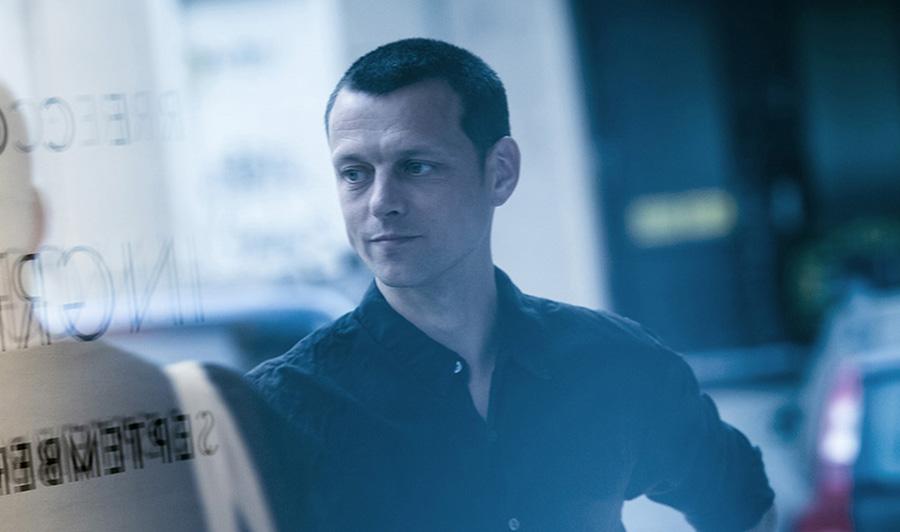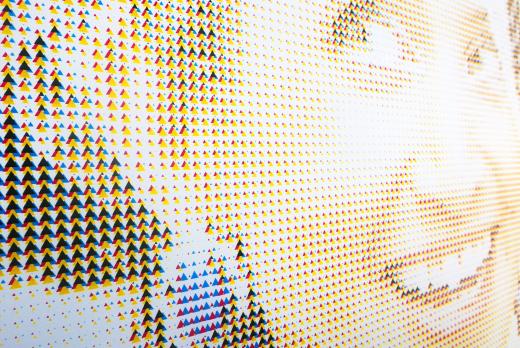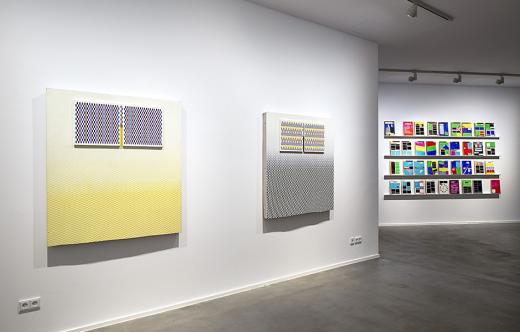Have you met... Luca Barbeni
Have you met... Luca Barbeni

Perhaps you haven't met Luca Barbeni yet, but you've probably heard of NOME. Luca is the main person behind this fairly young, forward-thinking gallery in Berlin operating between art, pop, culture, politics, and technology. Working with critically engaged newcomers and established artists from a variety of disciplines, NOME aims to raise awareness of the crucial issues facing our age.
We talked to Luca about his experiences in the digital realm as an artist and curator, and how he channels and challenges them in his ongoing project NOME.
Tell us about the very beginnings of NOME.
I started the space in May 2015. I came from the new media art scene; I was the curator of a digital art festival in Italy. Then I got the opportunity to open a gallery in Berlin. I thought it would be interesting to work with artists coming from that kind of scene, but who are not interested in pushing the technology aspect in art. They work strongly with digital technologies, but they want to present work that is critically engaged with some of the most important issues of our time.

Inaugural show at NOME: Paolo Cirio, "Overexposed"; May - July 2015,
more info here
What do you aim to communicate with the artworks you exhibit in this space?
I want to make people think about specific topics. The famous motto "Art for art's sake" is valid, but it's not really contemporary. I think that a lot of the formal expressions are done. In the digital art scene there is a lot of space where the formal approach is possible, because digital technology offers a lot of new ways. But personally, it is more interesting to try to present art that creates bridges with the reality, rather than just being enclosed in its own world.
What is your curatorial strategy here? How do you develop the program and choose the artists to work with?
It all goes pretty natural in a way. Because, as I said, I'm coming from the new media art scene. At the end of the nineties I was an artist. Then I took the role of the curator of a festival in Italy. It's all about the personal path. After many years of doing immaterial art, such as websites, projections, interactive installations, I was really interested in working with artists who work more with the so-called stable media – pictures, sculptures, prints, paintings. At the end of the nineties I was very transigent about this. I would never have though that I would open a gallery presenting prints hanged on the wall. Because it was all about immateriality, interactivity, and so on. That is why I think the path is important – I went through a lot of this kind of things, and now I would like to do something that is different and new for me.

Ingrid Burrington, "Reconnaisance" @ NOME, September - November 2016, more info
Could you tell us something about yourself, your background? How did you end up opening a gallery in Berlin?
At the beginning of 2000s, it was difficult, nearly impossible, or at least really expensive to print really nice digital prints, and it was impossible to print 3D printed sculpture. Now it is less expensive, the quality is better. I saw this convergence of digital artists trying to go more and more towards reality. As I always say, now it's much easier to go from bits to atoms than it was in the past. So that was really interesting for me. Except that, it's a completely new world, I dont hide it. I was curating a public funded festival, so the dynamics compared to a commercial gallery are completely different. I'm learning just by doing.
I decided to come to Berlin because I knew the city quite well, it's been more that 10 years that I come quite often. I knew a lot of people, so it was easier for me to start a new project. I didn't want to start it in Turin because I think that this kind of proposal would be less interesting in Italy. What I really appreciate here in Berlin is that the audience is very receptive. Even though the gallery is outside the center, outside the usual location for the gallery, the audience still comes here.
What was the most important or interesting thing you've learned in the past year of running this space?
Many things. Particularly what I learned is that it is really important to curate every detail - for the presentation of the artworks in the gallery, for the website, for the journalists... Another thing that I learned about the gallery system is that in the end location matters. As I said before, people are coming, but anyhow it is quite difficult to go with a contemporary art gallery in a location that is outside the central areas, like Mitte or Kreuzberg.

Navine G. Khan-Dossos, "Command: Print" @ NOME,
open through 10/02/2017; more info here
How is 2016 going for NOME? Could you introduce us briefly to the past, current, and upcoming shows?
In 2016 I experimented a little bit, I tried a different path for the gallery. In January I did a show with Quayola. It is an artist who is most interesting in the formal aspect. His work is about repurposing antique paintings or sculptures, but with really strong digital aesthetics. Regarding the aesthetic possibilities of the digital, I think that Quayola is one of the best artists. He is really pushing forward the expressive possibility of the digital technologies. After Quayola I did 3 shows with kinetic installations: Ralf Baecker, Nils Völker, and Joris Strijbos. Then we did the show with Ingrid Burrington, where I went back on the path of politics and art. So in 2016 I tried a little bit more varied program. In 2017 it will be more consistent again. I will get back to direction of art and politics, but not only that. Currently there is a really interesting show, "Command: Print", by Navine G. Khan-Dossos. Nadine works with Islamic art and its language, so in this show we have a Western artist working with Islamic arts, looking at the way that ISIS tries to talk to the Western world. Basically the most important piece of the show is about the covers of Dabiq, the monthly magazine of ISIS. What is interesting about this magazine is that it is made by an Islamic organisation using the Western aesthetics of magazines, framed like Newsweek, and realised to convince Western people to go to Syria. After that show, on the 16th of Febrary we will have the opening of a show with Kirsten Stolle. She is an American artist who works critically with Monsanto ads, for example. She works with collage, and repurposes Monsanto ads from the 60s to present a critical message about genetically modified organisms. And then we will start again with James Bridle, Paolo Cirio, and in September Nora Al-Badri and Jan Nikolai Nelle.
* * * * *
NOME
Dolziger Str. 31, 10247 Berlin
more info on the website
Current exhibition:
Navine G. Khan-Dossos, "Command: Print"
Open through February 10, 2017
More info